#shinichi sekizawa
Text

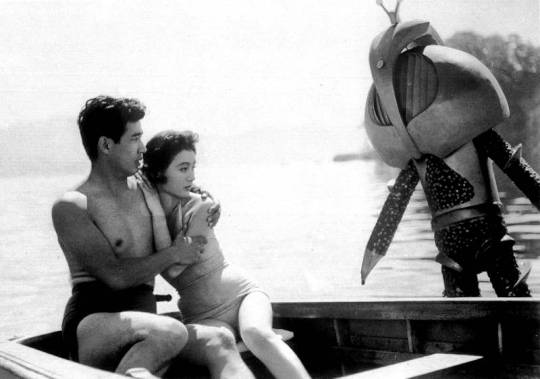
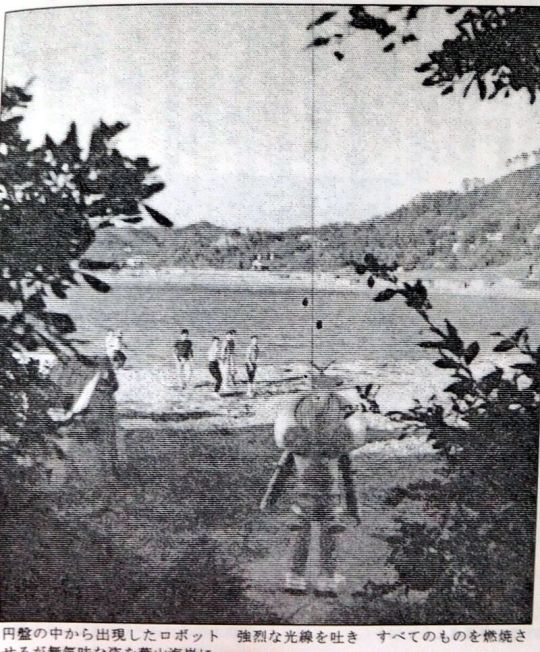

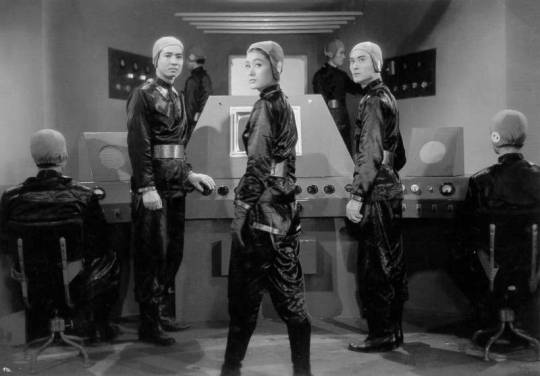

A poster, stills, and behind-the-scenes shots from Fearful Attack of the Flying Saucers, a 1956 Shintoho film. It was the first and only film directed by Shinichi Sekizawa, who would go on to change the kaiju genre forever as the screenwriter of Mothra and almost every 60s Godzilla film, among others. Tadao Takashima (a future kaiju star himself) and Junko Ebata were the leads. A 16mm print sold in 2010 and plans were drawn for a DVD release, but it remains all but impossible to watch.
#fearful attack of the flying saucers#shinichi sekizawa#tadao takashima#junko ebata#tokusatsu#behind the scenes
56 notes
·
View notes
Text
The supersized sequel ‘Son Of Godzilla’ stomped into theaters in Japan this week 55 years ago. 🏝🥚⛈
“𝙶𝚘𝚍𝚣𝚒𝚕𝚕𝚊, 𝙺𝚊𝚖𝚊𝚌𝚞𝚛𝚊𝚜, 𝚊𝚗𝚍 𝚗𝚘𝚠 𝙺𝚞𝚖𝚘𝚗𝚐𝚊... 𝚝𝚑𝚒𝚜 𝚒𝚜 𝚊 𝚛𝚎𝚊𝚕 𝙼𝚘𝚗𝚜𝚝𝚎𝚛 𝙸𝚜𝚕𝚊𝚗𝚍!”
#otd#movies#Kaiju#godzilla#minilla#son of godzilla#1967#Japan#monster island#showa era#toho#jun fukuda#shinichi sekizawa#Akira kubo#Spotify
9 notes
·
View notes
Text
Godzilla vs Gigan also has the protagonist (a manga artist) create a strict mom monster that is based around his girlfriend who knows karate
#the human scenes are SO good#Shinichi Sekizawa remembered he can write protagonists who aren’t journalists or scientists and boy it worked out
0 notes
Text
If you're ever wondering what to do in your Kaiju story, ask yourself: what would Shinichi Sekizawa do? Because the answer would be to write a weird, but kind hearted girl, usually a reporter, but always wiling to throw herself into danger for what's right.
248 notes
·
View notes
Text
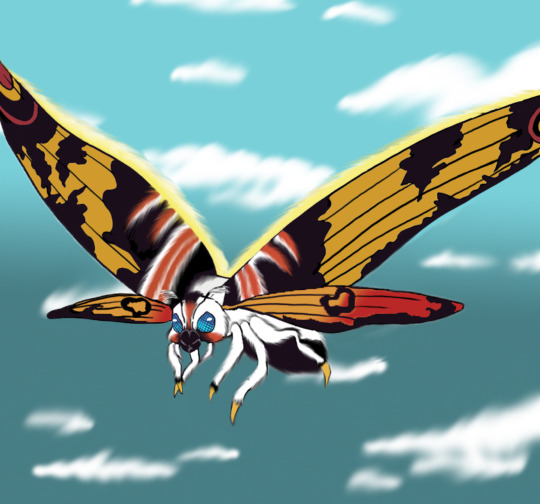
Mothra
Monster verse Series: Toho,Shinichiro Nakamura Yoshie Hotta Takehiko,Fukanaga Shinichi,and Sekizawa Eiji Tsuburaya
Artwork:Thesonicfan12345(me)
#digital art#drawing#digital drawing#art#fan art#godzilla#monsterverse#godzilla series#godzilla monsterverse#godzilla movies#godzilla monsters#mothra
17 notes
·
View notes
Text
God, Shinichi Sekizawa Godzilla movies just hit different. Dude knew how to write compelling human AND kaiju characters and stories with wild, creative turns like no one's business.
8 notes
·
View notes
Text
Shinichi Sekizawa, Screenwriter for "Mothra," was the head writer for a short-lived tokusatsu show called Agon the Atomic Dragon in 1964 about a fire breathing radioactive amphibious dinosaur.
Sometimes, I like to imagine that Mothra loves Godzilla because he reminds her so much of her younger brother.
11 notes
·
View notes
Text
Godzilla vs. King Kong, 1962
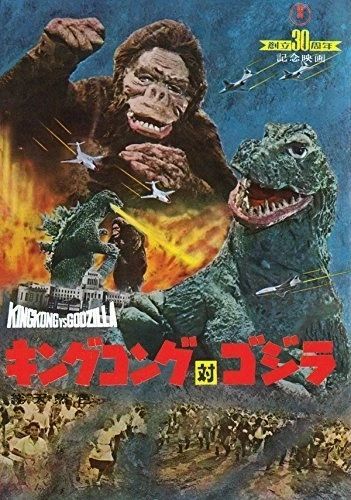
I laughed out loud watching this movie. It wasn’t the monsters that tickled my side, but the actors. You must appreciate the movie for what it is and not be offended. This was the first production with the two kings as opponents and it was entertaining. Ishiro Honda’s vision came to life by his creative imagination and a brilliant cast.
Behind the Scenes
Tomoyuki Tanaka approached Ishirō Honda with an idea to make another Godzilla movie, this time with King Kong as a nemesis. Honda put a lot of thought into it and wanted this movie to be a satire of Japanese programs. Television networks and sponsors engaged in wild publicity stunts to secure high ratings.
"People were making a big deal out of ratings, but my own view of TV shows was that they did not take the viewer seriously, that they took the audience for granted...so I decided to show that through my movie, the reason I showed the monster battle through the prism of a ratings war was to depict the reality of the times.” - Ishiro Honda
Honda teamed up with Shinichi Sekizawa when creating a fictional pharmaceutical company in the script. Shinichi’s experience working on television shows gave valuable insight to what Honda wanted when telling his story. The idea that a pharmaceutical company is supposed to make medicine wouldn’t be enough for the owner who wanted fame and more money, so to get a giant monster to glorify his company for the wrong reasons shows how ridiculous networks are as well as the viewing audience.
Toho studios wanted the monsters to be funny, from Kong’s demeanor to the battles. This concept would appeal to a wider and younger audience. During filming, the special effects crew were frustrated because monster battles are supposed to portray power, not include comedic antics. Honda was not happy at all about making monsters silly.
“I don't think a monster should ever be a comical character," and "The public is more entertained when the great King Kong strikes fear into the hearts of the little characters.” - Ishiro Honda
Shoichi Hirose played Kong and Haruo Nakajima played Godzilla. Tonaka was insistent to make the monsters funny, so he allowed the actors to design a fighting style that would be funny and appealing to the audience. Professional wrestling was becoming a popular sport in Japan; Hirose and Nakajima would use fighting techniques based off the sport to Tonoka’s liking.
After monster suits received approval, four octopi were used for filming on Faro Island because of limited funding, a suit couldn’t be made.
Tonaka was all hands in for the movie. After Honda’s script was approved, it was time to film.
The Story
The President of Pacific Pharmaceutical, Mr. Tako, sponsors a lot of television programs and the ratings he hoped to have isn’t doing much to boost the image of his company. He wants something grand that makes him stand out from other businesses with better ratings.
Mr. Tako hears about a monster discovered on Faro Island and he wants it to boost his ratings, so he sends two of his men, Osamu Sakurai and Kinsaburo Furue, to the island to retrieve it. During their journey there, and unbeknownst to them in another distant location, a U.S. nuclear powered submarine hits an iceberg. The impact of the collision and exposes Godzilla who’d been trapped inside and he destroys the sub.

Sukurai and Furue arrive at the island and with them they have a former native who helps as a translator. The visitors meet the village chief and and offer gifts. While there, a giant octopus comes to shore and begins attacking the village. Kong appears. He fights the octopus and saves the people. The natives offer Kong red berry juice and perform a ritual dance as he drinks. The combination of juice and dance make Kong fall asleep.
Now that Kong is unconscious, Sukurai and Furue transport the giant on a raft back to Japan. Waiting for them is Mr. Tako, and he’s thrilled when he sees Kong, however, the JSDF prohibits them from bringing the monster onto shore.
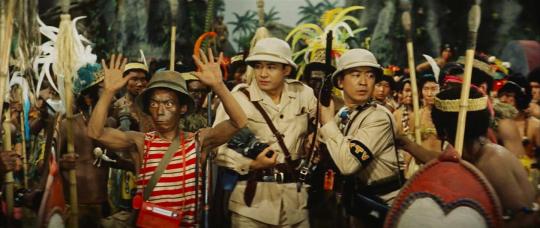
Godzilla reaches Japanese shores and begins destroying everything in sight. Kong abruptly awakens and runs to meet Godzilla and the two giants engage in an enormous battle.
Godzilla shoots an atomic blast at Kong and he retreats because Godzilla was stronger than he anticipated. Meanwhile, JSDF digs a deep pit and arms it with explosions and poison gas hoping it will be enough to end the tyrant’s rage, but it’s ineffective. The next defense tactic is a barrier of extreme high voltage wires and it does work. Kong reappears and uses the electric barrier to strengthen him.
Kong enters Tokyo and sees Sakurai’s sister, Fumiko, and he takes her to the top of the country’s National Diet Building. Sakurai and Furue informs the JSDF about the red juice from Faro Island and it’s medicinal effects. The JSDF immediately takes action and showers Kong with the juice knocking him unconscious. Furue is rescued and the mighty ape is transported to Mt. Fuji via balloons, where Godzilla is. The purpose is to have the monsters battle with Kong defending Japan from Godzilla.
It seems the effects of the berry has made Kong weak. Godzilla’s strength is overbearing. Godzilla sets fire to Kong, and it looks like the great ape is defeated until a thunder cloud appears and strikes Kong with lighting. He’s rejuvenated and he bounces up. The mighty two exchange blows and they tumble into Sagami Bay, but everyone watching them from afar hold breaths because they are underwater with only bubbles stirring.
Then suddenly, Kong emerges as the victor. Everyone cheers and shouts gratitude to him. Kong swims out to sea returning home to Faro Island.
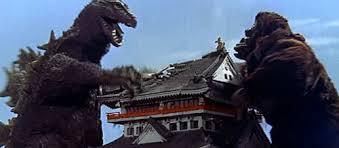
Release
King Kong vs. Godzilla was released in Japan August 11, 1962. This movie recorded the highest attendance of all Godzilla films to date.
An American version was made by John Beck who then sold the film to Universal-International and premiered in New York City June 26, 1963.
American critics were harsh, then and now. Unfortunately, the critics never took into account the era, the special effects techniques, the effort it took to create a masterpiece. If these were considered and the movie viewed with an open mind, they would’ve appreciated it more.
Cast and Crew
Starring: Tadao Takashima, Kenzie Sahara, Yu Fujiki, and Ichiro Arashima
Directed by Ishiro Honda
Written by Shinichi Sekizawa
Special effects by Eiji Tsuburaya
Movie Grade: 0.0 to 4.0
Score: 3.9
Photo references: Getty Images
Quotes reference: Toho Kingdom
#king kong#king kong vs godzilla#godzilla#monster#monster movies#japanese movie#movie review#movie release#movie history#movie theme#movie talk#movie time#review#king of the monsters#godzilla vs king kong#godzilla vs kong#movies
12 notes
·
View notes
Text
The Cinema Film Of The Week - Godzilla vs Mechagodzilla
Directed By Jun Fukuda
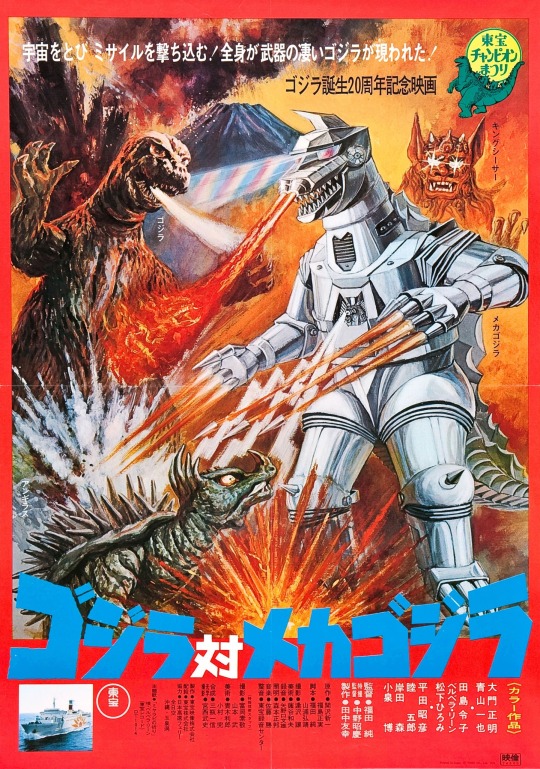
Story By Shinichi Sekizawa and Masami Fukushima
Starring Masaaki Daimon, Kazuya Aoyama, and Akihiko Hirata
Music By Masaru Sato
Distributed By Toho
Release Date March 21, 1974
Country Japan
5 notes
·
View notes
Text
Episode 1045-1046: The Birthday Party of Divine Punishment

Based on volume 98-99, files 1047-1050
Plot in five keywords:
At a birthday party of a model and her sister
They should save the girls from a stylist who tries to get closer to the girls
After the cake gets cut, the stylist is poisoned and the “divine punishment” is written on his forehead
The only person who’s carrying a functional marker is the model’s sister
What about the black spot that was found on the ground and the marker that was found in the kitchen
Important plot development:
First appearance of Yumi Sekizawa
Conan carries a pill with him. Sera notices it and calls Mary to tell her about it
Mary tells Masumi that the APTX wasn’t in a blue-white capsule, so it must be some kind of antidote
Mary tells Masumi to get the antidote
Mary got poisoned by the APTX in London at the Vauxhall Bridge. She met Tsutomu who kissed her. Later it turns out that it was Vermouth in disguise, who poisoned her during the kiss
We get to know that Tsutomu wanted to get to know who killed Koji Haneda but only found out that it was a big organization that found out about him and he had to flee. He didn’t call Mary for 10 years because of his amnesia and we get to know that he wanted to return to the MI6
Vermouth’s disguise is revealed when Mary talks about her daughter
We get to know that Mary is an MI6 agent
Vermouth spent quite a while in London, being disguised as Tsutomu Akai
Mary told Masumi that she should leave London immediately if she doesn’t return after meeting Tsutomu
Vermouth wasn’t able to infiltrate the MI6
Sera steels the medication box from Conan but the antidote isn’t inside
Mary’s cough is caused by the APTX
Mary and Masumi watched the tennis match of Minerva Glass and spotted Conan. As they’ve met him at the beach years ago, they knew he should be the age of Masumi but he’s still a small boy
THE MI6 did research on Shinichi Kudo. They told Mary that Shinichi was on the passenger list of a flight, that he doesn’t have a little brother and that he’s travelling with people who aren’t his family. He also stopped his detective work in Japan half a year ago and a small boy appeared at the crime scenes more often. With this information, Mary deducts that Shinichi also got shrunken and has some kind of antidote for travelling
Rating:
9/10 marker
This is a very interesting case, but obviously the plot relevant parts of Masumi and Mary are a bit more interesting. Therefore, you should definitely watch it.
8 notes
·
View notes
Text
Kaiju Week in Review (December 18-24, 2022)

Toho Kingdom is closing out the year with some big interview translations. I haven't had time to go through the full Honda piece yet, but it starts with him noting that Shinichi Sekizawa was perpetually single and obsessed with model trains and ends with his wife Kimi just ripping the shit out of the Heisei Godzilla movies, so it's clearly a must-read. The other translations are for Kazuki Omori and Koichi Kawakita interviews included in a behind-the-scenes featurette on Godzilla vs. Mothra. With Toho continuing to prevent official releases of these films from including such bonus features, it's good that fans are stepping up.
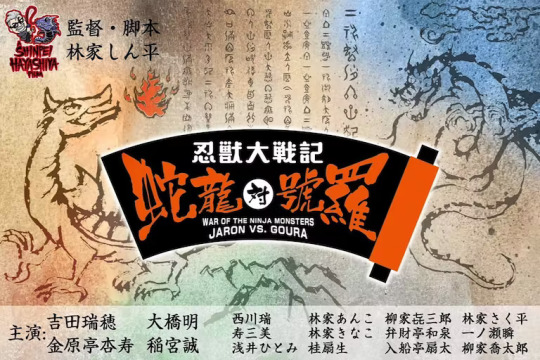
Shinpei Hayashiya is crowdfunding for his next indie kaiju film, War of the Ninja Monsters: Jaron vs. Goura. Production is already well underway; he just wants to make the effects better. (Hopefully that means quality over quantity.) It's set in Chichibu, and the monsters look an awful lot like Godzilla and Gamera.

It took a ridiculously long time, even by Japanese standards, but Shin Ultraman finally has a home video release date (April 12). The special features sound impressive (I'm especially glad to see Shin Ultra Fight present), but as is standard for Toho, there will be no English subtitles. So we'll have to see who else picks it up.

According to K-D-M, the fifth MonsterVerse film has wrapped shooting. It's still dated for March 15, 2024, so it looks to enjoy a lengthy post-production period.

The Asylum's 25th anniversary "spectacular" 2025 Armageddon hit VOD on December 23, again putting me in the awkward position of hyping up a 2022 kaiju film on here that turned out to be complete garbage. Above are my thoughts on it after streaming it last night. At least it was on Hoopla.
#ishiro honda#kaiju week in review#godzilla#war of the ninja monsters jaron vs. goura#kaiju#shin ultraman#2025 armageddon#godzilla x kong the new empire
60 notes
·
View notes
Text
2023 Tumblr Top 10
1. 248 notes - Jun 16 2023
If you're ever wondering what to do in your Kaiju story, ask yourself: what would Shinichi Sekizawa do? Because the answer would...
2. 147 notes - Dec 13 2023
Talking about The Man in the Suit reminded me of Bringing Godzilla Down to Size, a documentary about the effects work of...
3. 106 notes - Oct 23 2023
Hate it when Godzilla fans dismiss the Showa films, especially because they're 'silly and goofy' As if they aren't the creative...
4. 96 notes - May 20 2023
If you like tokusatsu because it's 'cheap and fakey' that's fine, but I don't want to talk to you about it. You effectively hate...
5. 93 notes - Oct 6 2023
I keep seeing takes on Twitter about GodIlla being evil and I hate that shit. Godzilla does hurtful things to mankind, yeah, but...
6. 79 notes - Nov 3 2023
It's fucking Godzilla day. Watch a Godzilla movie,.play with a toys, listen to a music's. Let the spirit of savage nature rising...
7. 72 notes - Dec 6 2023
MINOR GODZILLA MINUS ONE SPOILER Discussing the music Before he died, Akira Ifukube once said he didn't think his music fit the...
8. 72 notes - Nov 2 2023
Maybe a hot take, but I think Godzilla 2000 is the best of the millenium era films. I love GMK, Final Wars and mechagodIlla, but...
9. 63 notes - Dec 6 2023
Godzilla Minus One and Shin Godzilla are like Yin and Yang to me, man. The same but different. Shin is very plot driven. Its...
10. 63 notes - Oct 28 2023
Vincent Price was so funny to me, because everyone always calls him the master of horror and the king of fear. And he certainly...
Created by TumblrTop10
0 notes
Text
All Hail the Queen: Mothra (1961) Review
All hail the Queen of the Monsters! Introduced in the 1961 film of the same name directed by Ishirō Honda, this beautiful and colossal insect deity has become one of the most popular kaiju in the tokusatsu genre, starring in several of her own films and sharing the silver screen with the King of Monsters himself, Godzilla. Never without her two priestesses, the Shobijin, the mythical Mothra…

View On WordPress
#モスラ#Eiji Tsuburaya#Frankie Sakai#Hiroshi Koizumi#Ishirō Honda#Kyōko Kagawa#Mosura#Mothra.#Shinichi Sekizawa
2 notes
·
View notes
Link
93 notes
·
View notes
Photo

Ghidorah, the Three-Headed Monster (1964, Japan)
Godzilla’s introduction in 1954 enthralled and horrified Japanese moviegoers. That classic kaiju film, so filled with action and fantastical interest, introduced the Japanese to a monster also bearing the burdens of being a victim to something possible only in the nuclear age. Godzilla’s body is filled with keloid scars, meant to evoke the images of those who survived (if only for a time) the atomic blasts at Hiroshima and Nagasaki. Created in humanity’s pursuit of a civilization-destroying weapon, Godzilla is often interpreted as nature seeking payback against humanity. Despite Godzilla’s seeming desire for natural vengeance, Japanese audiences could empathize with Godzilla, recognizing the allegory that they had been living since 1945.
In the first four films in the Godzilla franchise and the Shôwa era of Godzilla (named after the concurrent Japanese Imperial era of Hirohito’s reign), Godzilla is an antagonist – wreaking havoc upon humanity, even when fighting other kaiju foes such as Anguirus (1955′s Godzilla Raids Again), King Kong (1962′s King Kong vs. Godzilla), and Mothra (1964′s Mothra vs. Godzilla). For Ishirô Honda’s Ghidorah, the Three-Headed Monster, Godzilla begins a rehabilitation of his image that will take three subsequent films to complete. When faced with an extraterrestrial threat to the planet, Godzilla will set aside his affray with Rodan (after both are persuaded by Mothra) to defeat King Ghidorah – who makes his cinematic debut with this film.
Princess Selina Salno (Akiko Wakabayashi) of Selgina is en route for an official visit to Japan in the midst of a winter heatwave. Just as her plane is destroyed by an assassin’s bomb, an enormous meteor impacts into the Japanese countryside near Kurobe Dam in Toyama Prefecture – considering that this same dam was destroyed by Mothra in 1961′s Mothra, all credit to the construction workers for their work in fixing the dam that quickly. Soon after, Princess Selina announces herself in the middle of a Tokyo crowd, news of her death greatly exaggerated. Claiming to be from Venus, she warns the public that Rodan – presumed dead at the end of his film debut in 1956 – will rise from Mt. Aso and that Godzilla, who has just battled Mothra in the previous movie, will destroy a ship. Away from the ears of the public, the gaze of assassins, and known only by bodyguard Detective Shindo (Yosuke Natsuki) and psychiatrist Dr. Tsukamoto (Takashi Shimura in his final Godzilla film appearance), she reveals a third prophecy. The final prophecy is prefaced by the fact that Selina’s Venusian civilization was destroyed by a three-headed dragon named King Ghidorah. She prophesies that he will attempt to destroy the Earth. Ghidorah, hailing from beyond our solar system, is the creature that emerges from the impacted meteor.
The evolving Godzilla franchise from Toho Company would soon face budget constraints and the artistic decision to make Toho’s most prized kaiju more family-friendly. Japan’s demographics in the late 1950s and early ‘60s skewed far younger than today – a time where the nation is now shrinking because of its rapidly aging population and low fertility rates. These considerations impact Ghidorah, the Three-Headed Monster narratively and aesthetically. Beginning with this film, Godzilla’s rampaging presence is a side effect to his ultimate defense of Japan, not an attempt to annihilate the Japanese. Nuclear allegories though mentionable to children, are likely to be beyond a child’s appreciation (in the neutral sense of the term). Thus, discussions of Godzilla’s origins and the morality of conflict against kaiju all but disappear in Ghidorah, the Three-Headed Monster.
In earlier Godzilla films, the combat between monsters or between Godzilla and the Japanese Self-Defense Forces (JSDF; which does not bother getting in the way of Godzilla, Rodan, Mothra, and Ghidorah in this monstrous rumble) was portrayed as a battle between or against a titan. One can feel the weight of these enormous, lumbering (“lumbering” does not usually apply to flying beings, so Mothra should be excluded) kaiju trudging against the urban battlefields scorched by electric and nuclear fire. With Ghidorah, the Three-Headed Monster, Honda and kaiju actors Haruo Nakajima (Godzilla), Masanori Shinohara (Rodan), and Shoichi Hirose (King Ghidorah) approach violence as if it was professional wrestling – not the Greco-Roman or freestyle wrestling associated with the Olympics. There is even a ludicrous moment where Godzilla and Rodan are batting an enormous boulder between each other with the former’s fists and tail and the latter’s wings. All that is missing in this scene are a net and a chair umpire announcing the score. A new Godzilla suit was commissioned for this film, giving Nakajima the ability to more fully personalize his character through gestures and an off-camera technician to control the direction of Godzilla’s eyes in the sockets.
These results are jarring, contributing to the perceptions of the franchise’s campiness in later Shôwa era-Godzilla films. In the West until only recently, these Godzilla films were only available in dubbed versions – readers who are anime fans know how poor some of those English dubs of Japanese media can be. These films, at least in North America, were also extensively re-edited to emphasize the increasingly cartoonish battles between and against the kaiju. With thanks to Janus Films and the Criterion Collection, the original, unedited, subtitled versions of Shôwa era-Toho Company kaiju films are easily accessible for the first time. This review is based on the original unedited and subtitled version of Ghidorah, the Three-Headed Monster. Beware the dubbed version of this film, which runs eighty minutes (as opposed to the original’s ninety-two minutes). But even with the restoration of all of the scenes with those supposedly boring grown-ups talking about tiresome things, the tonal dissonance between the human- and kaiju-centric scenes combined with the combat choreography is bewildering.
youtube
Debuting in Japan as San daikaijû: Chikyû saidai no kessen (translated literally as: “Three giant monsters: Earth’s greatest battle”), this is a film underselling – at least, in its title – the genius of the antagonist. Special effects wizard Eiji Tsuburaya (a co-creator of Godzilla) visualizes a serpentine dragon with, you guessed it, three heads. But to complicate things, Ghidorah also has two tails and wings – seven appendages in total. To keep all seven in motion as Ghidorah flies across screen, Honda and Tsuburaya utilized several wires (somehow, almost none of them are ever on-screen) and a handful of puppeteers to keep Ghidorah in realistic animation, even when he – screeching at Godzilla and Rodan – has his feet planted on the ground. Unlike Haruo Nakajima as Godzilla and Masanori Shinohara as Rodan, Shoichi Hirose cannot use his arms as Ghidorah. So where his fellow kaiju actor counterparts could keep their balance by maneuvering their arms, Hirose is left with no option other than to position his feet correctly and hope for the best. Future iterations of Ghidorah would look even more impressive than this first attempt. With this striking introduction into the Godzilla series (with a lower-string-heavy motif by longtime Godzilla composer Akira Ifukube... starting at 0:49 in the provided link), Ghidorah’s emergence begins the greatest rivalry in kaiju cinema.
Ghidorah, the Three-Headed Monster, for unknown reasons, was never released theatrically in many European countries. That makes it, outside of Japan and North America, one of the lesser-known films in the Toho Studios’ kaiju canon. The film is also, in addition to Mothra vs. Godzilla, the inauguration of – dare we say it – one of the earliest cinematic universes (and certainly one of the most sprawling). How the Marvel Cinematic Universe (MCU) is acclaimed for being so narratively innovative escapes me, especially given the financial and logistical realities of studio filmmaking in 1950s/1960s Japan and the 2010s in the United States. Even when fighting against the ill-informed wishes of producers and executives, the directorial vision is almost always apparent in these Godzilla films, including Ghidorah, the Three-Headed Monster. The same cannot be written for numerous other cinematic universes and their respective films.
In the halls of Toho throughout the 1960s and into the ‘70s, one of Godzilla’s creators was becoming unsettled by the requests of the company’s executives. As the director who brought Godzilla to being, Ishirô Honda insisted that Godzilla be seen as a figure warning against the folly of nuclear war. The increasing demands to make Godzilla a character engage in human-like behaviors and have identifiable human emotions fit perfectly with what some social critics saw as the infantilization of Japanese audiences because of the arrival of popular Japanese television. Honda – who essentially created the kaiju film, the monster film, and the disaster film – is an underappreciated figure in cinema whose legacy is undergoing a rapid reevaluation because of the fact that the Shôwa era kaiju films (in their original unedited and subtitled forms) are being made widely available outside Japan for the first time.
Nevertheless, after Ghidorah, the Three-Headed Monster, the pendulum would swing exactly the way Honda never wanted to witness. Honda would not live to see it, but I think he would have appreciated the fact that the pendulum has swung back.
My rating: 6.5/10
^ Based on my personal imdb rating. Half-points are always rounded down. My interpretation of that ratings system can be found here.
#Ghidorah the Three Headed Monster#Ishiro Honda#Godzilla#Mothra#Rodan#King Ghidorah#Yosuke Natsuki#Hiroshi Koizumi#Yuriko Hoshi#Takashi Shimura#Haruo Nakajima#Masanori Shinohara#Shoichi Hirose#Shinichi Sekizawa#Akira Ifukube#Eiji Tsuburaya#kaiju cinema#TCM#My Movie Odyssey
1 note
·
View note
Text
“Tokyo Anguirus”
A TOHO movie “Tokyo Yoitoko”(1957). Based on a story by Shin’ichi Sekizawa. But this is not Kaiju-movie. A comedy. A baseball player William Radon from Hawaii joins a Japanese team “Tokyo Anguirus”. See his team logo patch!
https://twitter.com/shimo_x2/status/926521054482153472?s=21

#Anguiras#tohostudios#godzilla#baseball movies#baseball team logo#rodan#1957 movie#E. H. Erick#shinichi sekizawa
82 notes
·
View notes